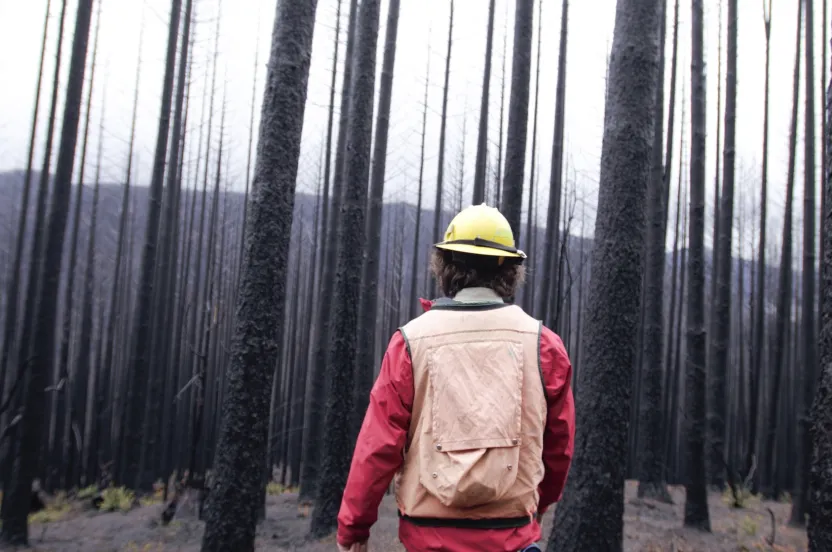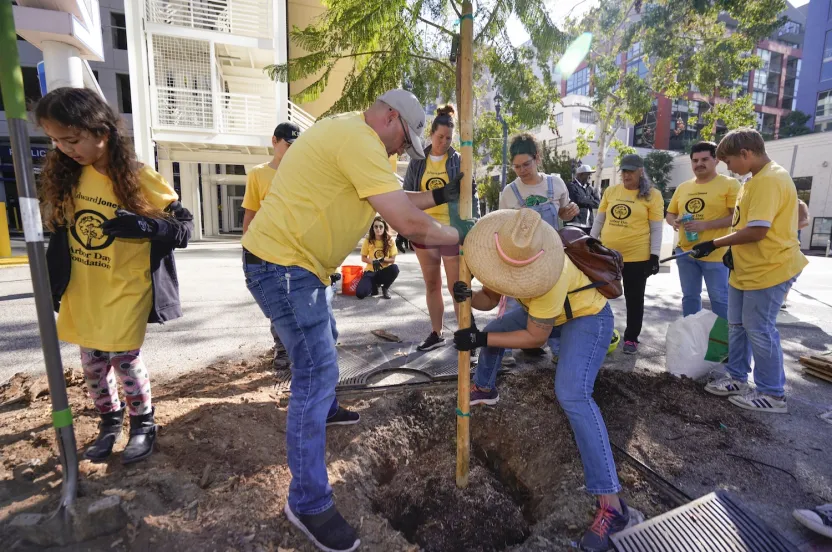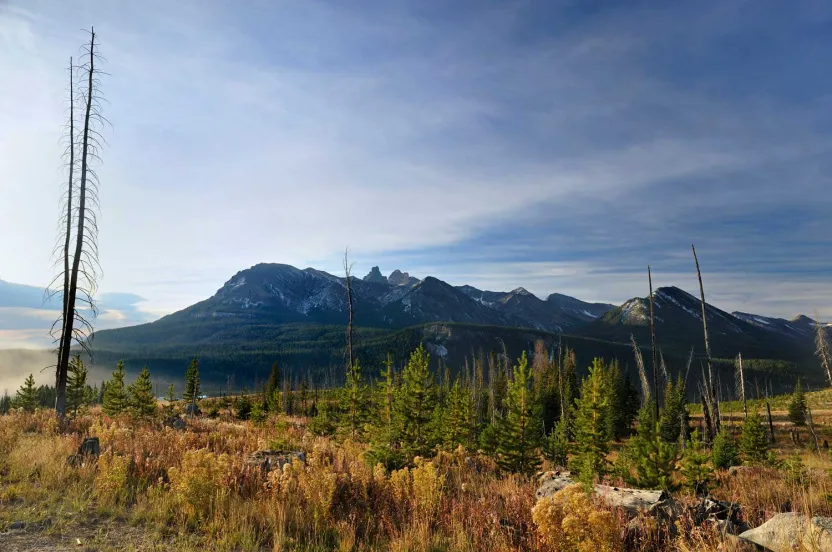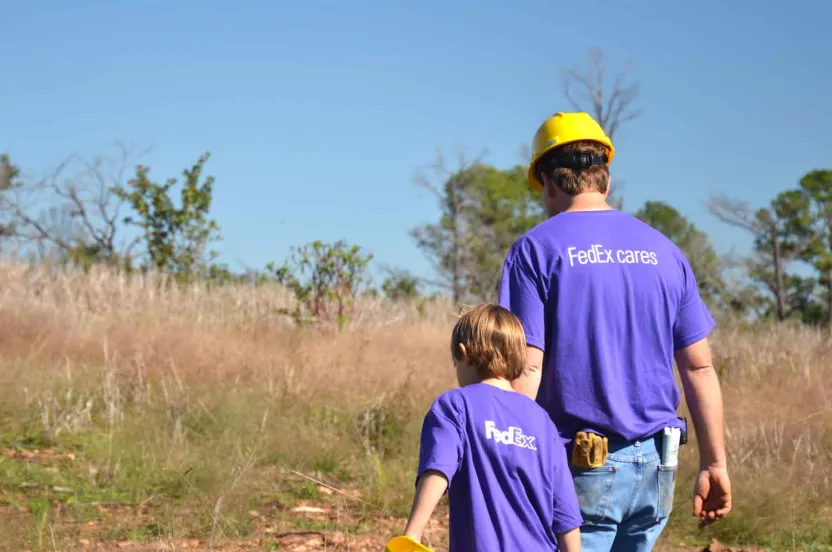Give before midnight on July 31 to double your impact where trees need us most. CHOOSE A PROJECT
The Long Road to Wildfire Recovery: What It Really Takes to Replant a Forest
Wildfires can devastate vast landscapes in a matter of hours, leaving behind charred soil, fragile ecosystems, and communities searching for a path to recovery. But from this destruction comes the opportunity to rebuild — carefully, thoughtfully, and with nature in mind.
June 9, 2025

Replanting after a wildfire isn’t just about rushing to put trees back in the ground. It’s a complex, collaborative process rooted in science, timing, and resilience.
The Arbor Day Foundation works closely with local partners across the world to ensure that every seedling planted post-fire contributes to a healthier, more sustainable future.
Here’s a look at what it really takes to bring forests back to life after wildfires.
A thoughtful and collaborative process
Forest recovery can take years, and every step requires thoughtful coordination between forestry experts, landowners, and community partners.
The work begins almost immediately after the fire is out, but planting trees is actually one of the last steps in a much longer timeline.
First comes site assessment and preparation. Forestry teams start by determining what species should be replanted and at what density. Factors like moisture levels, slope, soil type, and climate trends all play a role in deciding what a particular site can support long-term. Species like ponderosa pine, Douglas fir, and western larch are common in fire-prone areas due to their resilience, but even the toughest trees need decades to mature into fire-tolerant stands.
Site prep is a critical and often labor-intensive phase. Competing vegetation — especially grasses — can outcompete young seedlings for limited moisture and nutrients. In arid regions, controlling this competition is especially important. Land managers may use herbicides or mechanical methods like brush removal or raking to clear the way for future planting. The goal is to give seedlings the best chance at survival by reducing the competition during their most vulnerable years.
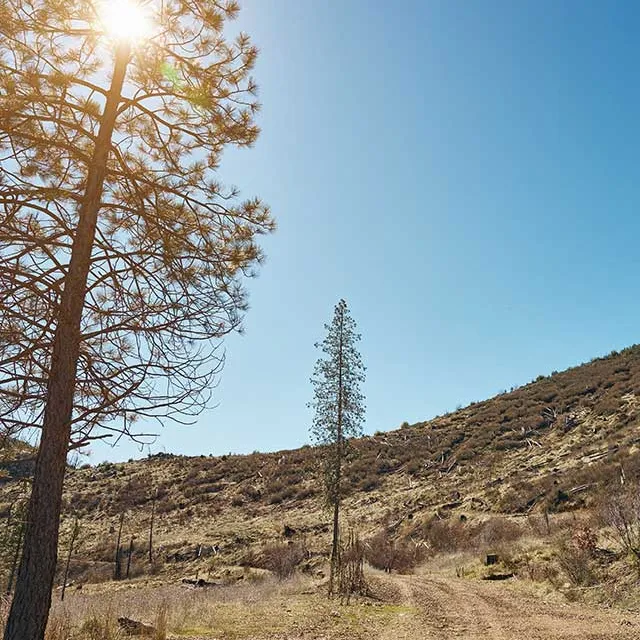
Although it may seem logical to plant right away, the ground is often too hot or dry immediately following a fire. In places like eastern Oregon or the Cascades, moisture levels must be just right to ensure seedlings survive. This makes the planting window incredibly short — sometimes just a few weeks out of the year. Cone collection is another crucial early step in the post-wildfire restoration process, ensuring the right seeds are available to grow the next generation of forest. On par with this entire process, timing is everything when it comes to cone collection. Most conifers produce cones during specific times of year — typically late summer to early fall — so the collection window is short. Crews must move fast to gather cones before they open and release their seeds naturally.
It’s labor-intensive work, often done by hand, and requires expertise to ensure the cones are mature and viable. Viable seeds are then sent to nurseries where they are cultivated into seedlings — a process that often takes 12 to 18 months.
As wildfires become more frequent and intense, the demand for seedlings has outpaced the available nursery availability across the U.S., creating a race against capacity. During severe fire seasons, nurseries can quickly become overwhelmed, making it difficult to find space to grow the volume of trees needed. This creates a bottleneck in the reforestation timeline, where even if the land is ready and planting plans are in place, there simply aren’t enough trees to move forward. In this way, seed collection and nursery availability have become critical — and often underestimated — components of forest recovery after wildfire.
Getting new trees in the ground is the final step in a long and complex recovery journey — and it's far from simple. Replanting often takes place in remote, rugged terrain where access is limited and conditions can change rapidly. It requires strong leadership on the ground to coordinate planting crews, tree deliveries, and narrow weather windows — often planned years in advance.
Long-term commitment and collective investment
Even after planting is complete, the work is far from over. True forest recovery spans decades and demands sustained stewardship — from thinning and fuel reduction to hazard tree removal near homes, roads, and trails. Whether deep in a rural forest or along the edge of a growing community, restoring fire-impacted landscapes requires planning, patience, and ongoing partnership.
“The work is not easy, and it’s very specific. But with more than 50 years of experience, we’ve built a trusted network of high-quality partners who know how to get trees in the ground the right way,” said Bradley Brandt, senior program manager at the Arbor Day Foundation. “We combine that local expertise with science and technology to identify where our donor funding will make the biggest impact. As stewards of this support, we’re committed to making the smartest, most meaningful decisions every step of the way.”
The Arbor Day Foundation has identified five global priority regions where science and technology have revealed the greatest need for reforestation, and where trees can have the most impact. One of these targeted areas is the American Pacific West, due in large part to the growing wildfire recovery needs.
This is where partners like Green Diamond Resource Company play a vital role. As a sixth-generation, family-owned business, Green Diamond has spent more than a century managing forests responsibly, balancing environmental stewardship with economic sustainability. When the massive Bootleg Fire tore through southeastern Oregon in 2021, destroying thousands of acres, the Arbor Day Foundation stepped in, knowing that successful replanting would require both expertise and shared responsibility.
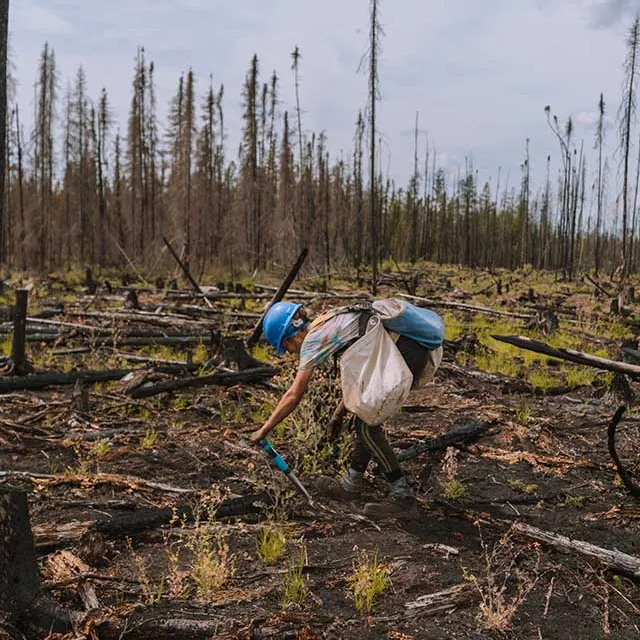
The reality is that reforestation at scale requires significant resources to do it right. While the cost to grow a single seedling may be less than a dollar, that’s just one piece of a much larger, more complex pipeline. There’s seed collection, site preparation, transportation, labor, planting, and long-term care — all of which add up quickly. In fire-affected areas like Klamath County, replanting is done not for short-term gain, but out of deep responsibility to the land, the local economy, and the people who call these places home.
It can take generations for a forest to fully mature, yet every seedling planted today plays a vital role in a much larger system. One that provides clean air and water, wildlife habitat, carbon storage, and economic stability — especially in areas where forestry infrastructure like mills are at risk of disappearing without healthy forests to sustain them. These benefits extend far beyond forest boundaries, but the financial burden of reforestation often falls on local communities and landowners.
“We’re bearing the cost of replanting and caring for this tremendous natural asset — but everyone benefits from it,” says Julia Grant, the director of policy, partnerships, and sustainability at Green Diamond. “That’s why we need others to help invest in this meaningful work.”
Agility and meaningful action to meet the "new normal"
Fueled by record-breaking heat, prolonged drought, and unusual lightning storms, wildfires are burning hotter, faster, and across more acres than ever before. In 2024 alone, nearly nine million acres burned in the U.S. — a staggering 231% increase from the previous year.
While fire has long played a natural role in shaping healthy forest ecosystems, today’s megafires burn with such unnatural heat and intensity that they’re not just destroying trees — they’re wiping out the seed banks stored in the forest floor, the very system nature relies on to recover.
“In a healthy forest, there’s usually a seed bank in the soil that allows seedlings and vegetation to sprout back,” said Nik Larum, general manager at Cal Forest Nursery. “But these fires are so hot, they’re killing that seed source entirely. What’s left behind in some places is essentially a moonscape — there’s nothing left to grow.”
This kind of destruction doesn’t just impact the landscape; it also threatens the long-term genetic diversity of the forest. “We are seeing fires happen at such a scale that they almost wipe out an entire seed zone in a very short period of time,” said John Davis, Vice President and General Manager of Mountain West Timberlands. “That creates a challenge, as we potentially lose all the genetics for that region.”
In the face of these rapidly changing conditions, the reforestation process must also adapt. “The environment around us is constantly changing,” said Davis, “and we have to change with it to some extent. So how do you set yourself up for success going forward? You have to be nimble and able to adjust.”
But despite the scale of devastation, hope remains — and meaningful action is already underway. “It’s quite humbling when you go over a ridge and come down the other side and there’s literally nothing left,” said Larum. “But one of the things I find most rewarding is being able to walk into a greenhouse and see half a million trees that are going to reforestation projects across five different states. To know I’m part of something that big in scale and nature is pretty incredible.”
In the wake of wildfires, trees become more than just a solution — they become a symbol. A symbol of hope, renewal, and resilience. “Trees play a huge part in giving people hope and community resilience after a wildfire,” said Taylor Nilsson, executive director at the Butte County Fire Safe Council in California. “When we think about replanting, we always encourage people to nurture and love the trees they’re replanting — not just for today, but for that 50- or 100-year tree they may not live to see. That tree is for the next generation. And it’s being planted with wildfire resilience in mind.”
Meaningful action means acting fast — but also acting wisely. It means planting trees that will thrive decades from now in a shifting climate. It means seeing reforestation not as a quick fix, but as a long-term investment in the health of the land, the strength of our communities, and the future we’re all responsible for building.
